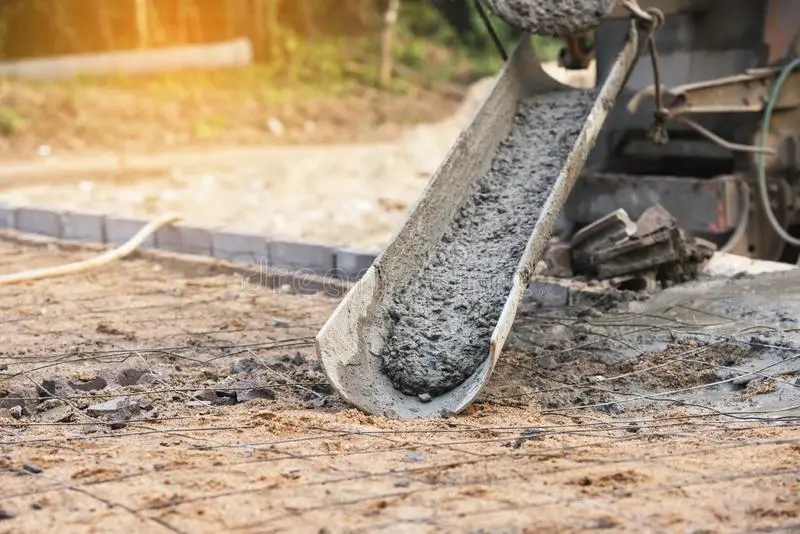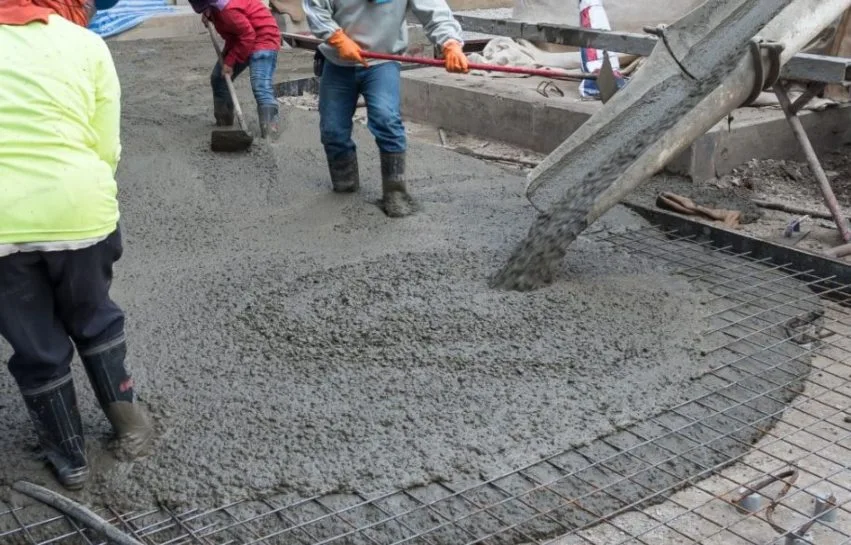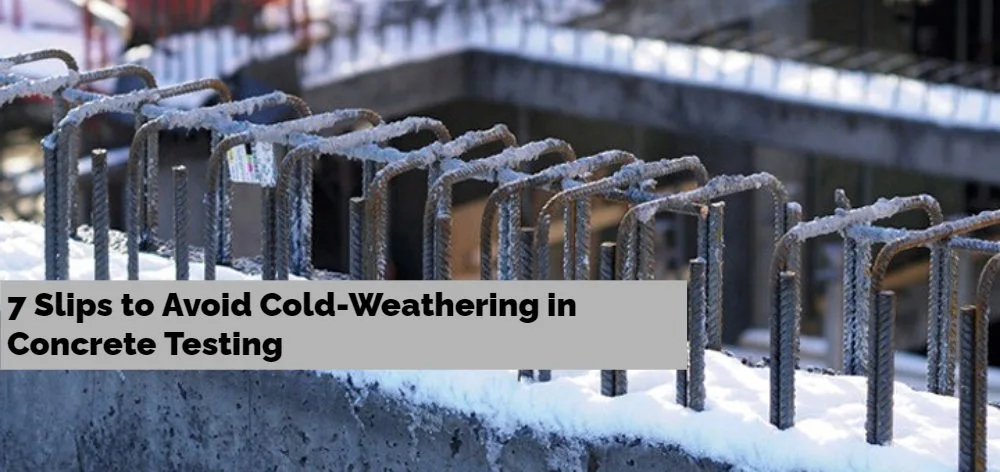Canada becomes colder in the winter weather and construction projects get affected one way or another. Concrete is an important construction material that needs to follow clear concrete testing in Edmonton, especially in winter to avoid cold weathering adverse effects in your construction projects. Weather conditions on site become severe whether hot or cold, dry or humid, and windy or calm requiring concrete testing in Edmonton to get the optimum results. Concrete mix is specified and designed according to requirements and concrete testing technicians make sure to testify to all the possible doubts before the construction commencements.
Concrete placed in cold weather conditions without inadequate precautions can have negative impacts on low ambient temperatures. According to American Concrete Institute (ACI); concrete cold weathering is a period in which the concrete remains below 50 degrees Fahrenheit for about 24 hours and for more than three successive days. It can potentially lead to difficulties with concrete freezing at an early age.
Cold Weather Concreting
Exposure to cold weather comes with serious consequences to the strength Gained together with the shot and long-term concrete durability and performance. Concrete Testing in Edmonton is done to meet or exceed the minimum design requirements. Moreover, sufficient strength and durability are important to protect concrete during the mixing process, placement, transportation, and curing to evade sub-standard durability properties and low strength. Concrete testing technicians in Edmonton recommend following codes and bits of advice provided for concreting in cold weather for dealing with the challenging weather in Canada.

Why Cold weathering is a Challenge?
Severe cold weather conditions can considerably affect the concrete quality together with its mechanical properties. For cold weather concreting, the construction site contractors should make sure that all the negative impacts of the decreasing temperature gradient must be checked on the concrete. Concrete Testing in Edmonton ensures to get the quality of strengthening structures.
Concrete must be secured from freezing to reach a minimum strength of 500 pounds per square inch (psi) which classically happens in the first 24 hours. However, if the concrete freezes being fresh before developing sufficient strength needs assistance. Resist the expansive forces linked with the freezing water caused ice formation eventually resulting in the disruption of the cement paste matrix. This gives an irreparable loss in strength thus on construction. Proper concrete testing in Edmonton is needed on-site for early detection and for avoiding the reduction of the ultimate strength. With time-to-time careful investigation allows the concrete to attain a compressive strength of around 500 psi which is a sufficient strength to avoid significant expansion and further damage if frozen. Concrete testing technicians in Edmonton observe the time of concrete placement below 40 degrees Fahrenheit and cater that the cracking doesn’t occur. Concrete becomes the most challenging material to deal with for smooth and continuous construction projects during winter. Here are a few slips and mistakes that the contractors do while concrete construction projects and must be avoided to nullify cold-weathering in Concrete.
7 Slips to Avoid Cold-Weathering in Concrete
Resolving the structural issues while using concrete in winter to avoid project delays requires knowing the do and don’ts of cold weather concreting. Below mentioned are the 7 slips to avoid concrete cold-weathering:
Avoid the Concrete Placement on Frozen Ground
The placement of your concrete slab really depends on the usefulness of the concrete curing circumstances. Frozen ground can resolve when defrosted, causing the concrete to fissure. The fresh concrete next to the ground will also preserve slower than the surface, import the top of your concrete slab will fix while the bottom stays lenient. Concrete testing in Edmonton is done to avoid this problem as concrete with different temperature gradients can’t have adequate strength. Thus, can lead to cracking and structural disaster.

Don’t Allow your Concrete Temperature to Drop Below Freezing
Concrete curing requires maintaining a temperature of around 10°C, especially in winter when the temperature drop can cause trouble. Concrete must be mixed with lukewarm water in winter as the fresh concrete can freeze at -4°C to maintain the proper compressive strength measurement. Concrete testing technician in Edmonton utilizes the maturity meter to check the concrete temperature for efficient results in construction projects.
Cut-off Cold Tools Usage
Metal being a good conductor of temperature and electricity requires the tools and metal building material to be handled with great care. If the concrete material is picked up with the colder tools that can result in the transfer of temperature thus causing the concrete shrinkage. It is better to cut off these cold tools from the concrete so that it cannot negatively affect the sufficient strength development of your concrete slab and better quality of cold-weather concrete.
Employ Heaters to rise Concrete Temperature
Concrete requires to stay warm for continued curing to develop strength. If the concrete slab’s temperature drops, curing will stop too. Portable heaters/careful heating arrangements to deliver extra heat into the ground making the concrete warm. This is done by ensuring concrete curing for gaining strength. Excessive heat can result in structural weakness. Make proper arrangements for heating to avoid any inconvenience.
Cold Weather Concrete Sealing in Inclement Conditions
Concrete sealers make construction concrete more resilient to weather exposure and other outside features. If the concrete placement is in cold weather, concrete sealers are required to save the concrete from the low-temperature gradient. Concrete sealers work well in severe weather conditions based on the recommendation of Concrete Testing Technicians in Edmonton. Sealing usually should not be used if the temperature isn’t below 50°F (10°C).
Checking the temperature of cold-weathering concrete is significant to guarantee the construction of high-quality concrete that fulfills thermal control plan conditions. If appropriate attention is not set on the sufficient strength development of the concrete, many common problems can occur including:

Use Real-Time Concrete Temperature Sensors
- lack of required strength,
- freezing of concrete at early ages,
- instant temperature changes,
- insufficient protection of the structure and its durability
- unsuitable curing procedures.
Central Material Testing Canada has all the concrete quality testing in Edmonton for making your construction projects more efficient and strong. We help in dealing with such problems by using real-time temperature sensors that tell the optimal temperature of concrete during the curing stages. Enabling your concrete doesn’t freeze and the temperature differential is upheld under specific limits. If the maximum temperature doesn’t achieve the temperature sensors will notify to attain the maximal limits thus concrete gains strength properly.
Don’t Misjudge Daylight
In winter, the amount of daylight lessens thus making the construction process slower. It is crucial to use your time sensibly, mismanagement of the schedule could lead to more glitches. Daylight not only provides you with plenty of light, but it also gives warmer temperatures. Concrete must be placed during daylight hours to conserve heat and energy. Central Material Testing is offering the best concrete testing in Edmonton for quality assurance in construction projects.



Leave a Reply